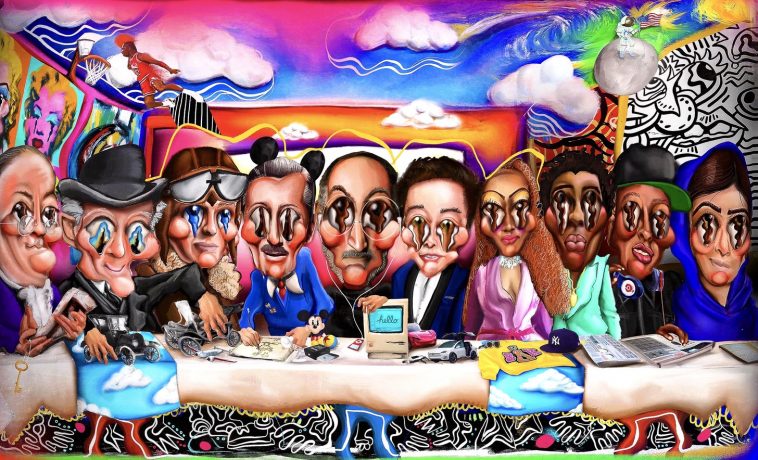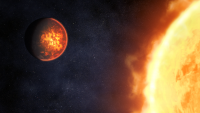At the moment when the concept of the metaverse is hot, all industries have begun to explore in this rich land. Among many industries, the integration and mutual promotion of the art industry and the Metaverse are particularly obvious. At the MetaCon Metaverse Technology Conference hosted by 51CTO not long ago, Gu Qiang, co-founder of Tentacle Technology Co., Ltd. and founder of Dayoubuyan Culture Co., Ltd., brought us a special speech on “The Exploration of Metaverse in the Art Industry”. Highlights the many possibilities for the fusion of the art industry and the Metaverse. 51CTO also organized the core content of this speech, hoping to help everyone.
1. The evolution of art
At present, the metaverse is not a very rigorous concept. It does not refer to a certain type of technology but refers to all technologies and things related to the Internet in general. Therefore, the image of the metaverse is closer to an all-encompassing fusion “monster”. Art can be understood as an important part of this fusion “monster” body.
In the process of art development, there are two important influencing factors, one is the medium of art creation, and the other is the medium of art dissemination. Regarding creation, the earliest medium of art is rock walls and rock. In ancient times, our ancestors used rocks to carve on rock walls, which is one of the earliest forms of art we can trace back.

With the improvement of human production capacity, the medium of artistic creation is also constantly evolving. From stone carving to tempera, from tempera to oil painting, in the process of upgrading art creation medium again and again, people’s pursuit of art form and the value contained in art works are constantly rising. It was during this period that a large number of art creators and artists appeared in the public eye.
Entering the era of industrialization, the invention of the camera has enabled us to have a richer way of artistic creation. People no longer need to spend a lot of time creating works of art through the complex act of painting. The new medium brings creators a better creative experience and a subversive creative state.
After this, it is the modern that we are most familiar with. Whether it is a computer, a mobile phone, or a pad, it is a high-quality medium for artistic creation that people can use at present. With the continuous evolution of technologies in various fields, whether there will be more new media changes in the future, and whether AI can become the next generation of art creation media, the answers to these questions require our continuous exploration.
The communication medium of art is relatively simple. At first, people did not have high-quality media such as newspapers and prints that were easy to spread, and they could only spread art through word of mouth. And due to the inconvenience of transportation, the dissemination of art will be greatly restricted. Therefore, the works of art in this period are often difficult to be effectively disseminated and diffused.
With the continuous development of means of transportation, people gradually began to be able to overcome the difficulties brought by distance, and the development of art also began to rely on such media. Lighter and more portable creative media such as paper and canvas also brought more convenience to the dissemination of art in this period.
Today, the Internet covers the whole world, and the media and methods of art communication have become very extensive. Under the empowerment of the Internet, we have also become the generation with the greatest access to information in history. In such a state, how should art be defined? As the now-popular metaverse gradually sinks, what kind of spark will the combination of the metaverse and art spark?
2. The Possibility of Metaverse + Art
The first possibility in the “metaverse + art” ecology is the recently extremely popular NFT. NFT is a tradable digital artwork that successfully solves a long-standing problem: when an image is copied and pasted, people cannot tell which image is the original and which image was copied The resulting brand new image. And NFT makes good use of blockchain technology to solve the problem of uniqueness of virtual items.
The core problem of NFT at present is the singleness of its gameplay. The attitude of the vast majority of users towards NFT is “blind buying”. They will buy a lot of NFT and hope that the NFT in their hands will appreciate in the future. However, NFT itself has no uncertainty and practicality. Unlike collections such as stamps and antiques, NFT is very weak in display. We cannot easily show the NFT we own to others in the real world.
But with the advent of the Metaverse, these kinds of problems will cease to exist. In the virtual world of the metaverse, the displayability of NFTs will be amplified, and we will be able to intuitively appreciate other people’s NFT collections in the virtual world. Under such a scenario, the uniqueness of NFT will also greatly increase its value. In general, NFT has many possibilities in both market and application, which need to be further explored and explored.
In the “metaverse + art” ecology, another important topic is AI and the value measurement of artworks created by AI. There are two ways to measure the value of traditional works of art. One is to measure the value of the artwork by multiplying the production cycle of the artwork and the average hourly wage of the creator. The second is to measure the value according to the meaning contained in the artwork. When a large number of social meanings are accumulated on the same work, its value will rise sharply.
The measurement of the value of works of art created by AI is obviously not applicable to the above two common methods. In this process, we need to think about whether the works of art created by AI really need people to measure their value, and whether AI is an equal creator with us, or is it available to human beings? The authoring tools used, this is a very worthwhile question at present.
An animation from the Palace Museum’s 70th-anniversary gift exhibition: A peony flower in the national treasure-level painting “Peony Picture” is slowly opening, which is done by AI. We hope that this flower can gradually change
In the past, there was only one way to do such a thing, which was the accumulation of a large number of paintings. To achieve a very smooth effect, it was necessary to create fine brush strokes frame by frame and use huge human input to present this art. For an ordinary artist, it takes about two days to complete the creation of one frame of “Peony Picture”. The total duration of this animation is 70 seconds. Calculated at 60 frames per second, it takes a person ten years to complete the production of this animation.
With the blessing of AI technology, this task that is almost impossible to rely on human beings can be realized in a short period of time with high quality. This is a very interesting possibility that AI brings to humans. Therefore, while we are thinking about the ethical issues of AI, we might as well try to use its capabilities to achieve some tasks that were once difficult to accomplish.
In addition to the above two categories, another hot possibility that currently exists in the “metaverse + art” ecology is digital humans. The biggest advantage of digital people, summed up in one sentence, is “low-risk brand spokesperson”. As the saying goes, no one is perfect, and each of us has various shortcomings. When these shortcomings appear on public figures, they will be infinitely magnified. This magnification is for public figures and the brands behind them. Not good news. And digital people or digital idols will never have such a problem.
At this stage, there are many discussions about digital people and companies that pay attention to digital people. Digital people are actually a very broad concept. All-digital people are digitized from top to bottom. The most typical example is the virtual image of Hatsune Miku. The other is “half-truth and half-fake”. For example, Xiaobing, which has been wildly hyped before, has a real person behind it, but the appearance is replaced by AI technology. In this way, it can also be called a digital human.
3. Summary and Outlook
Art and art in the metaverse are a very broad concept. There are too many possibilities. These possibilities will change the way we treat and understand art in the future. We do not necessarily have to go in a certain direction. develop. Just like the human cognition of art in the Renaissance or Impressionist period, from the aristocratic class to the commoner class, and then from the commoner class to the state of all people in the world.
In the world of the metaverse, we can extend art into a very large area. Even if you didn’t know anything about art in the past, in the metaverse you can get very close access to art. This is a very exciting state.
from a budding state to a full bloom. The state, and the image in the process, requires us to create it ourselves.




GIPHY App Key not set. Please check settings